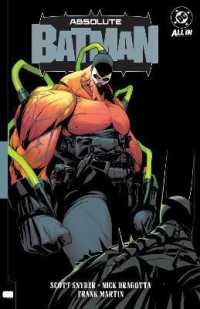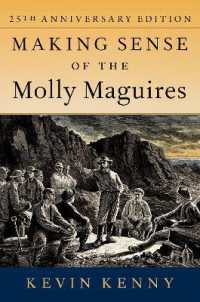Full Description
Focusing on three South African communities the authors dismiss the idea that some groups are voiceless, arguing that they are being deliberately ignored by dominant news media
The dominant news media are often accused of reflecting an 'elite bias', privileging and foregrounding the interests of a small segment of society while ignoring the narratives of the majority. The authors of Tell Our Story investigate this problem and offer a hands-on demonstration of listening journalism and research in practice. In the process they dismiss the idea that some groups are voiceless, arguing that what is often described in such terms is mostly a matter of those groups being deliberately ignored. Focusing their attention on three very different South African communities they delve into the life and struggle narratives of each, exposing the divide between the stories told by the people who actually live in the communities and the way in which those stories have been understood and shaped by the media. The three communities are those living in the Glebelands hostel complex in Durban where over 100 residents have been killed in politically motivated violence in the past few years; the Xolobeni community on the Wild Coast, which has been resisting the building of a new toll road and a dune mining venture; and Thembelihle, a settlement south-west of Johannesburg that has been resisting removal for many years. The book concludes with a set of practical guidelines for journalists on the practice of listening journalism.
Contents
Acknowledgements
List of Illustrations
Introduction
Chapter 1 The Trajectory and Dynamics of Afrikaner Nationalism in the Twentieth Century: An Overview - Albert Grundlingh
Part 1: Assent and Dissent through Fine Art and Architecture
Chapter 2 Afrikaner Nationalism and Other Settler Imaginaries at the 1936 Empire Exhibition - Lize van Robbroeck
Chapter 3 From Volksargitektuur to Boere Brazil: Afrikaner Nationalism and the architectural imaginary of modernity, 1936-1966 - Federico Freschi
Chapter 4 Afrikaner Identity in Contemporary Visual Art: A Study in Hauntology - Theo Sonnekus
Part 2: Sculptures on University Campuses
Chapter 5 'It Is Not Even Past': Dealing with Monuments and Memorials on Divided Campuses - Jonathan D. Jansen
Chapter 6 Knocking Jannie off his Pedestal: Two Creative Interventions to the Sculpture of J H Marais at Stellenbosch University - Brenda Schmahmann
Part 3: Photography, Identity and Nationhood
Chapter 7 Celebrating the Volk: The 1949 Inauguration of the VoortrekkerMonument in State Information Office Photographs - Katharina Jörder
Chapter 8 Reframing David Goldblatt, Re-thinking Some Afrikaners - Michael Godby and Liese van der Watt
Part 4: Deploying Mass Media and Popular Visual Culture
Chapter 9 The becoming girl: Anton van Wouw's Noitjie van die Onderveld, Afrikaner Nationalism and the Construction of the Volksmoeder Discourse - Lou-Marié Kruger
Chapter 10 Cartoons, Intellectuals, and the Construction of Afrikaner Nationalism - Peter Vale
Chapter 11 Manifestations of Militarisation: Visual Narratives of the Border War in 1980s South African Print Culture - Gary BainesContributor biographiesIndex








